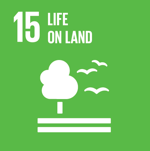Genetic characterization of native trees of Patagonia
 Chile
Chile
 Argentina
Argentina
Executive Summary
The genetic variability of Chilean and Argentinean oak and rauli was evaluated using molecular and isoenzymatic markers to establish criteria for conservation, genetic improvement, reforestation and forest management. Genetic origins of N. nervosa and N. obliqua were identified; levels and direction of introgression in natural hybrids were determined; genetic information was associated with the geographical distribution of the species; half-brother seeds were obtained for future progeny trials; a seed bank of the Argentine populations of both species was established. Seeds were collected from sites with information on climatic and genecological variation.
As for new technologies, a set of SSRs for Nothofagus was developed atINRA, France, where new primers and the transferability of the SSRs developed for Quercus (European and American), a related genus, were tested. This marker has future application in gene flow studies to understand the genetic structure of Argentine populations of both species which show a high differentiation between spatially close populations.
Genetic diversity showed different patterns of variation for both species according to geographical location, latitudinal for both species in Argentina and longitudinal in Chile. The analysis of the markers allowed the identification of priority areas for conservation and forestry management.
The technological solution
Knowledge of the genetic variability of a species is a prerequisite to set strategies for conservation, genetic improvement and rational use of genetic resources. Traditionally, the description of variability has been based on the description phenotypic, growth and germplasm productivity. In this case, the morphological description has been complemented with the application of enzymatic and molecular markers to characterize the species at the genotype level.
Results
An important result has been the determination of the genetic variability of oak and raulí in wild populations in Argentina and Chile and their geographical distribution. Knowledge of the genetic diversity of these populations is fundamental to any breeding or germplasm conservation initiative both in situ in protected stands and ex situ in seed and germplasm banks, biodiversity and forest management.
On the other hand, a new technology has been developed at the Laboratoire de Génétique et Amélioration des Arbres Forestiers in France, within the framework of the INRA - INTA agreement. The innovation consisted of identifying polymorphic SRH in Nothofagus from a new battery of primers developed for the genus and for Quercus, a related genus.
Beneficiaries
- The direct beneficiaries are the institutions dedicated to the conservation and protection of natural forests in Chile and Argentina.
- The beneficiaries are also the native populations and private forest producers who have become interested in the Raulí and Roble Pellín plantations as a result of the increased value of the native forest genetic resource promoted by the information generated by the project.
- Other beneficiaries are national scientists who have been trained in the application of the techniques and methodologies used in the project, which also contributed to the conduction of three doctoral theses.
Sustainable Development Goals

Participating Organizations
Executor
- Instituto de Investigaciones Agropecuarias (INIA) - Chile
Co-executor
- Instituto Nacional de Tecnología Agropecuaria (INTA) - Argentina




